I know there are areas of our gardens that just, well, tick us off and create literal nightmares. (I once dreamed that the entire neighborhood came over to suggest that one small problem spot meant I was a terrible gardener whom no one should listen to.)
In the midst of my favorite planting season — autumn — I give you some workhorse natives for the U.S. Midwest and East. Many of these low-care perennials slowly spread, and November is still a great time to get them in the ground and provide a head start for faster establishment next year. Fall planting eases transplant shock, as cooler weather and autumn rains ensure a less-stressful transition into garden soil.
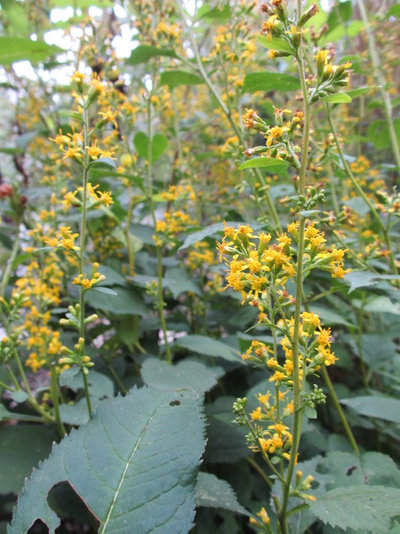
Benjamin Vogt / Monarch Gardens
Zig zag goldenrod (
Solidago flexicaulis) has to be my absolute (current) favorite for dry shade. As my students say, it’s just stupid good. Native from the Midwest to the East Coast, zig zag blooms in early to mid-September over about two weeks. The 24-inch flower spikes are quite fragrant — in fact, they smell very much like my grandmother’s perfume, so it’s a perennial I’ll never go without.
Zig zag is attractive to pollinating insects. Plant it in fully shaded to mostly shaded spots, in wet to dry soil, and it will slowly form a colony over many years. Zig zag is also quite easy to divide and give to friends.
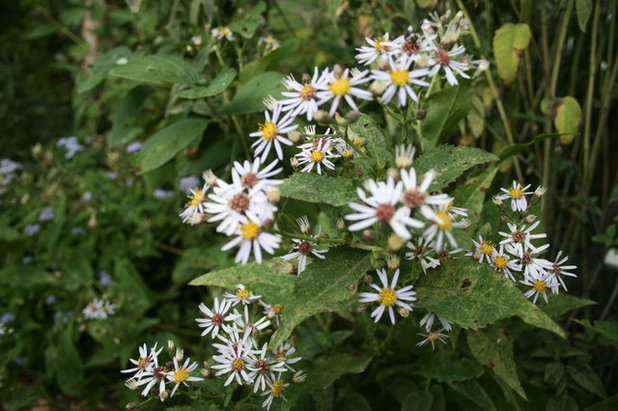
Benjamin Vogt / Monarch Gardens
Big leaf aster (
Aster macrophyllus) truly does have big leaves for an aster. This is more a late-summer to early-fall bloomer, and can in fact take full sun if the soil is medium to moist. In shade, dry soil is great. I like to use this aster as a ground cover even though it can get up to 18 inches tall — the large leaves shade and cool the soil and outcompete weeds, and the blooms can last a month. Big leaf aster will slowly spread by rhizomes, so it’s perfect for an area you just want something — anything — to grow in. It’s native from the northern Midwest and Great Lakes region on into Appalachia and the Northeast.
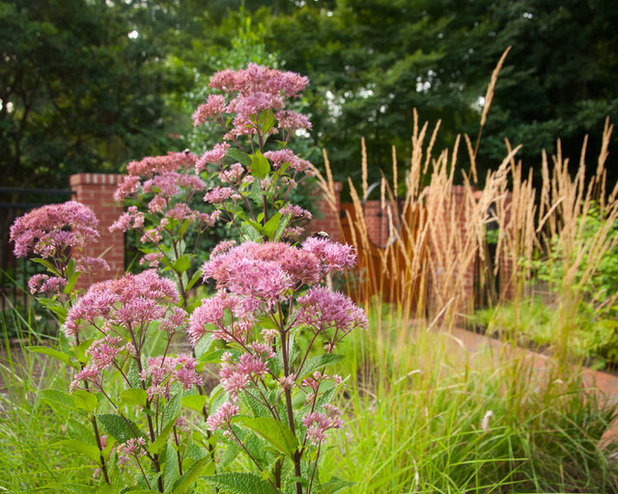
groundworks studio
I’ve mentioned Joe Pye Weed before, specifically
Eupatorium purpureum, as a neat accent plant that brings in butterflies and is native from the Midwest to the East Coast. Usually folks plant this tall perennial in full sun with moist soil, but dry soil in shade works too — though it might not bloom quite as much. Still, at about 5 feet tall and 2 to 3 feet wide once established, it has a uniquely commanding presence in a shorter shade garden.
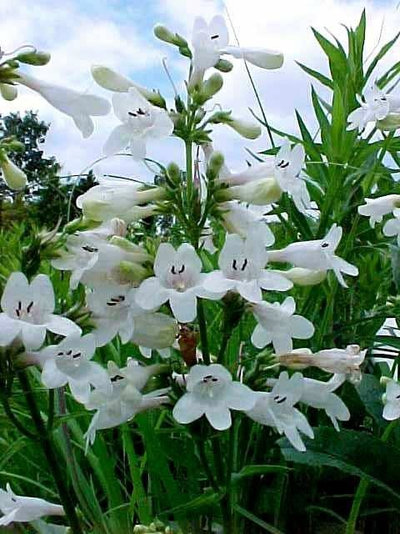
Missouri Botanical Garden
Foxglove beardtongue (
Penstemon digitalis) just might be a winner for you. Insects with long tongues love to nectar here, and it does attract hummingbirds. The flower spikes can get up to 4 feet tall, so it might be a plant you place between Joe Pye Weed and the shorter asters and goldenrod — you know, if you take my advice and use all of the plants in this ideabook. Foxglove is native from the Eastern Plains all the way up into New England, but not as much in the Southeast.
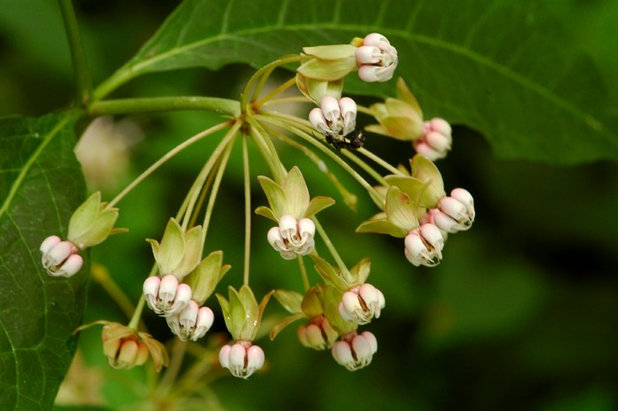
Hugh and Carol Nourse
Poke Milkweed (
Asclepias exaltata) can help the struggling monarch butterfly population, as it’s a caterpillar host plant. Blooming in early summer, poke milkweed can reach 3 to 5 feet tall — taller if there’s a bit more sun and moisture. The stems are slender, so this sweet-smelling bloomer can fit in anywhere, perhaps underplanted with big leaf aster. Its ornamental seedpods release a puffy, precious cargo.
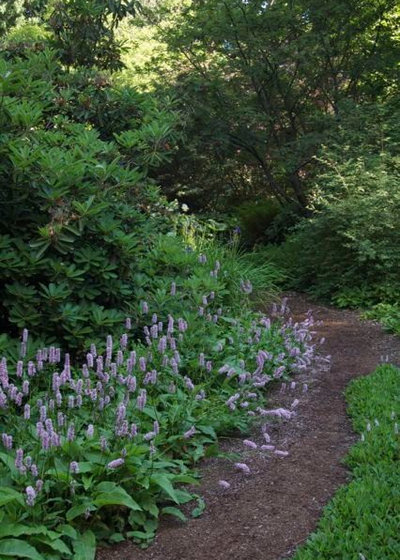
CYAN Horticulture
I’ve given you some ideas for shade and woodland plants that aren’t so common — we have plenty of hostas and ferns and astilbe already, in my opinion. Additional plants you might try include
Short’s Aster (
Aster shortii) and
Early Meadow Rue (
Thalictrum dioicum). These North American natives will benefit a plethora of pollinating insects and be as low maintenance as the more typical shade garden standbys we default to. Try one or two, and you’ll make me a very happy guy.
So what flowering natives for shade work for you? Let’s get a nice list going in the Comments section!





